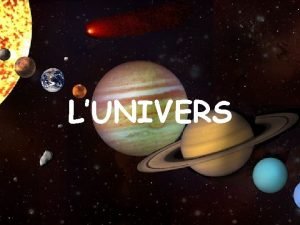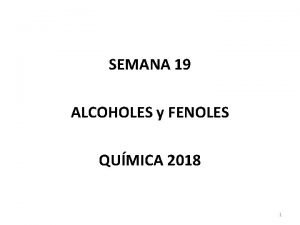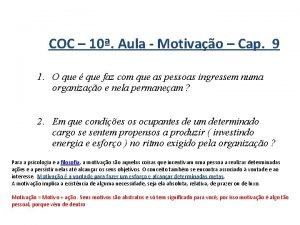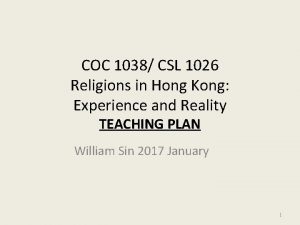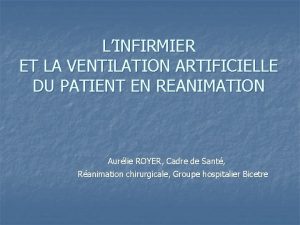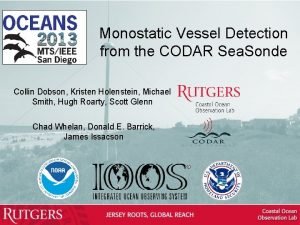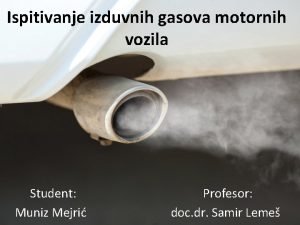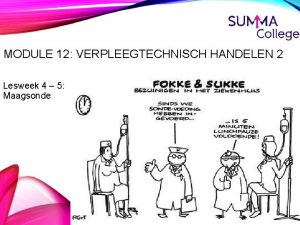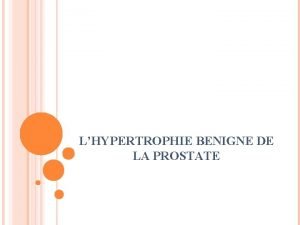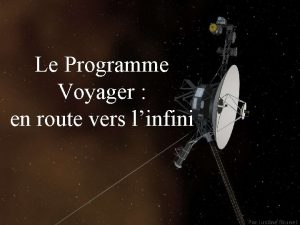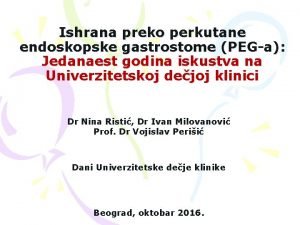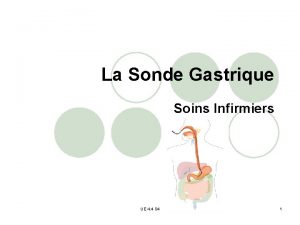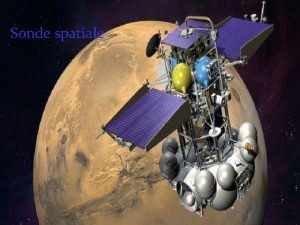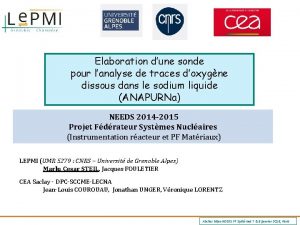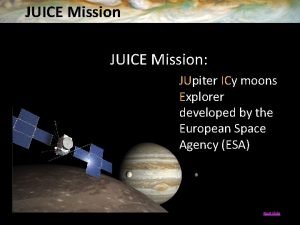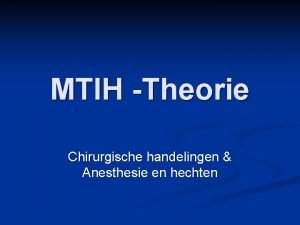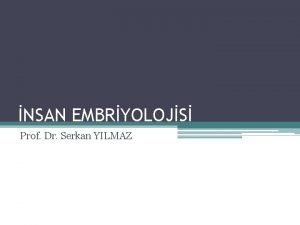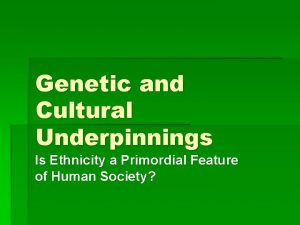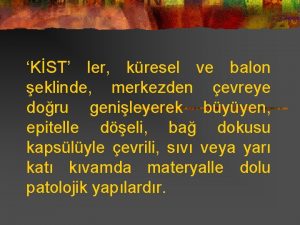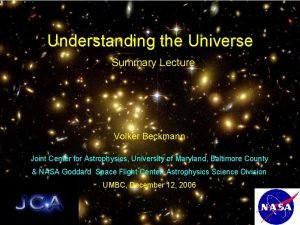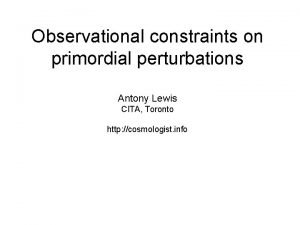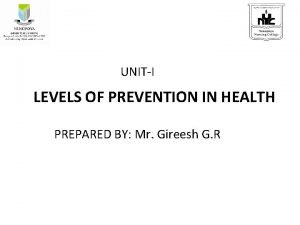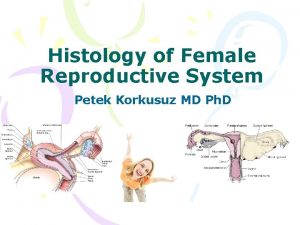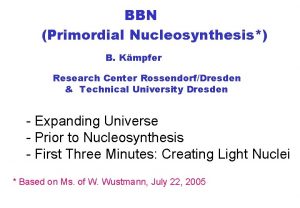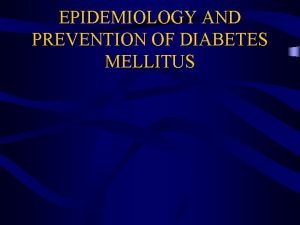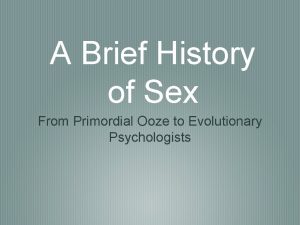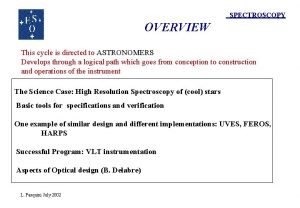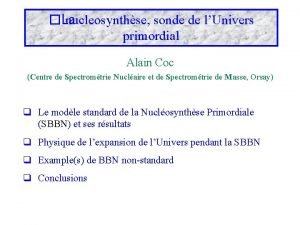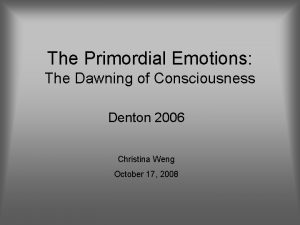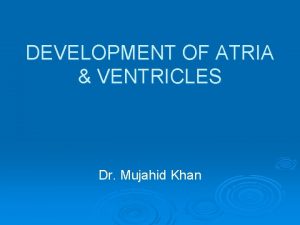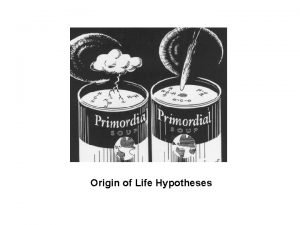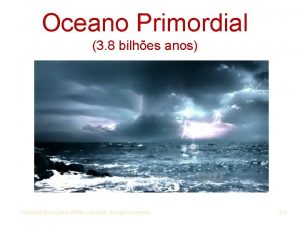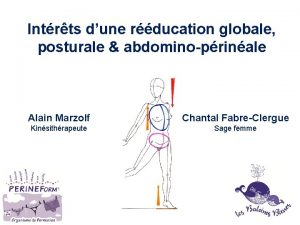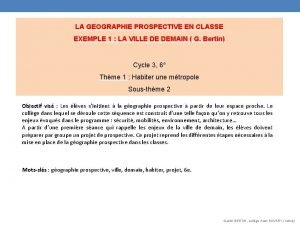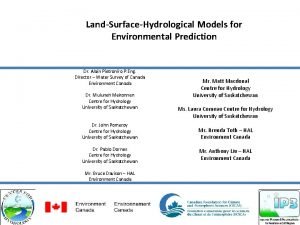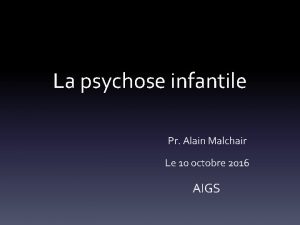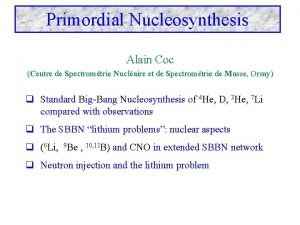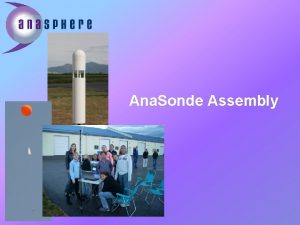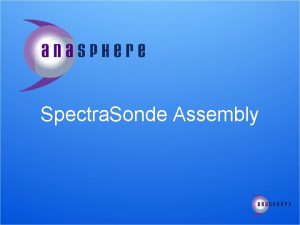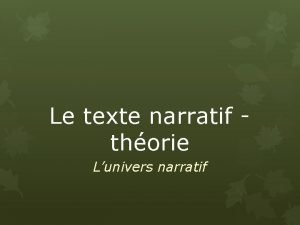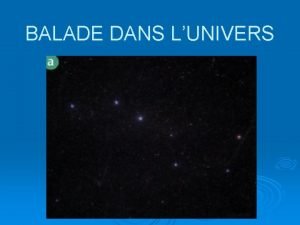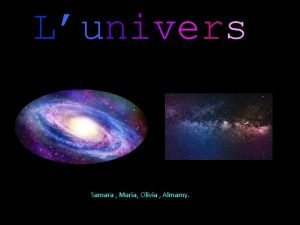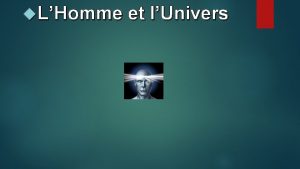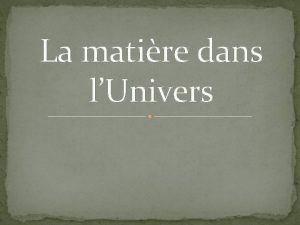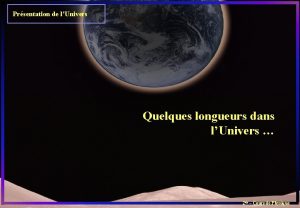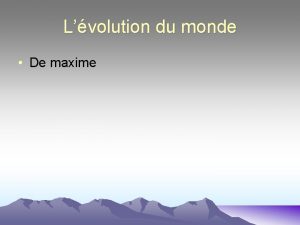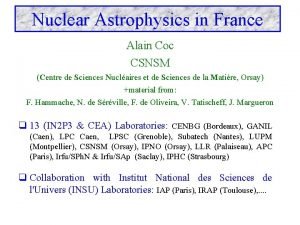La nucleosynthse sonde de lUnivers primordial Alain Coc




















![New analysis of BBN rates [DAACV] Descouvemont, Adahchour, Angulo, Coc & Vangioni-Flam ADNDT (2004) New analysis of BBN rates [DAACV] Descouvemont, Adahchour, Angulo, Coc & Vangioni-Flam ADNDT (2004)](https://slidetodoc.com/presentation_image_h/212cadbcac15200c8008148304900849/image-21.jpg)


















![Quadratic coupling [Damour & Nordtvedt 1993] Quadratic coupling: Attraction towards a minimum of the Quadratic coupling [Damour & Nordtvedt 1993] Quadratic coupling: Attraction towards a minimum of the](https://slidetodoc.com/presentation_image_h/212cadbcac15200c8008148304900849/image-40.jpg)













![[Burles & Tytler 1998] D/H observations in a cosmological cloud Lyman- forest Cloud at [Burles & Tytler 1998] D/H observations in a cosmological cloud Lyman- forest Cloud at](https://slidetodoc.com/presentation_image_h/212cadbcac15200c8008148304900849/image-54.jpg)









![Effect of other reactions q Independent effect of em [Nollett & Lopez 2002], GF, Effect of other reactions q Independent effect of em [Nollett & Lopez 2002], GF,](https://slidetodoc.com/presentation_image_h/212cadbcac15200c8008148304900849/image-64.jpg)


- Slides: 66

�La nucleosynthèse, sonde de l’Univers primordial Alain Coc (Centre de Spectrométrie Nucléaire et de Spectrométrie de Masse, Orsay) q Le modèle standard de la Nucléosynthèse Primordiale (SBBN) et ses résultats q Physique de l’expansion de l’Univers pendant la SBBN q Example(s) de BBN non-standard q Conclusions

Nucleosynthesis, nuclear astrophysics 1. Stellar evolution Ø Source of stellar energy Ø Composition change e. g. the 12 C( , )16 O reaction versus 3 12 C 2. Origin of the elements (isotopes) Ø Bulk solar system abundances Ø Peculiar objects, gamma ray astronomy 3. Fundamental physics Ø Neutrino properties (solar, BBN) Ø Variations of fundamental couplings (BBN, stellar evolution) Ø Theories of gravity Ø …. .

Three observational evidences for the Big-Bang Model 1. The expansion of the Universe Galaxies move away from each other according to Hubble’s law: V = H 0 D with H 0 70 km/s/Mpc, the Hubble parameter (or “constant”). D a(t) (length scale parameter) 2. The Cosmic Microwave Background radiation (CMB) A black body radiation at 2. 7 K corresponding to the redshifted spectrum emitted when the universe became transparent 1. Primordial nucleosynthesis Reproduces the light-elements primordial abundances over a range of nine orders of magnitudes.

SBBN compared to observations 1) Standard Big Bang Nucleosynthesis Calculated 4 He, D, 3 He, 7 Li primordial abundances as functions of the baryonic density (or bh 2) 2) Spectroscopy Observed 4 He, D, 3 He, 7 Li abundances as functions of metallicity primordial abundances 3) Anisotropies in the Cosmic Microwave Background radiation WMAP (+…) gives (or bh 2) with 3% precision üLaboratory physics inputs: • Number of neutrino families N = 2. 9840± 0. 0082 (LEP) • Nuclear reaction rates and neutron lifetime

Anisotropies of the Cosmic Microwave Background (CMB) At t 0. 3 My, and T 3000 K : recombination (H+ p+e-), the Universe becomes transparent (presently T = 2. 725 K) bh 2=0. 02273 0. 00062 [WMAP: Dunkley et al. (2008)] WMAP web page (http: //map. gsfc. nasa. gov/)

Density components of the Universe A natural reference : the critical density = 1. 88 h 2 10 -29 g/cm 3 or 2. 9 h 2 1011 M /Mpc 3 H 0 Hubble “constant” (h=H 0/100 km/s/Mpc h 0. 7) / C Some values Radiation (CMB) R 5 10 -5 Visible matter L 0. 003 Baryons b 0. 044 Matter (Dark+Baryonic) m 0. 26 Vacuum 0. 74 Total T 1 Number of baryons per photon : nb/n et bh 2= 3. 65 107

Determination of primordial abundances In astrophysics, “metals” = everything beyond He i. e. Z>2 “Metallicity” increases with time as the interstellar medium is enriched in heavy elements by SN explosions Primordial abundances : 1) Observe a set of primitive objects born when the Universe was young • 4 He in H II (ionized H) regions of blue compact galaxies • 3 He in H II regions of our Galaxy (? ) • D in remote cosmological clouds (i. e. at high redshift) on the line of sight of quasars 1) 7 Li at the surface of low metallicity stars in the halo of our Galaxy • Extrapolate to zero metallicity : Fe/H, O/H, Si/H, …. 0

4 He observations in blue compact galaxies 4 He from a sample of 86 H II regions in 77 blue compact galaxies: ØYp= 0. 2472± 0. 0012 or ØYp= 0. 2516± 0. 0011 (according to atomic physics data) [Izotov, Thuan & Stasinska 2007] Alternative analysis ( same data set) Ø 0. 232 < Yp < 0. 258 [Olive & Skillman 2004] [Dmitriev, Flambaum & Webb (2003) compilation, updated (2008)]

D/H observations in cosmological clouds (2. 84± 0. 26)× 10 -5 (1 - ) [Fields &Sarkar 2008] Protosolar Local ISM 10 -5 [X/H]= log 10( (X/H) / (X / H ) ) Burles & Tytler 1998 a, b; O’Meara et al. 2001; D’Odorico et al. 2001; Pettini & Bowen 2001; Kirkman et al. 2003, Crighton et al. 2004, Pettini et al. 2008

Observation of lithium abundances in low metallicity stars Spite plateau: Li/H versus metallicity (time): Li/H 1. 12 10 -10 [Spite & Spite, 1982] • Low dispersion • 6 Li observations In principle, low Li destruction 0. 1 dex (? ) 0. 9 1. 9 10 -10 (2 ) [Ryan et al. (2000)], 2. 34 10 -10[Meléndez & Ramírez (2004)] 1. 3 2. 3 10 -10[Charbonnel & Primas (2005)], 1. 1 1. 5 10 -10 [Asplund et al. (2006)] Reliable primordial abundance (? )

Deduced primordial abundance : Li/H = (0. 91– 1. 91) 10 -10 after correction for systematic effects [Ryan et al. , 2000]

Nucleosynthesis (I) For T < 1012 K, only p, n, , e-, e+ and x’s remain Equilibrium p n : Nn/Np=exp(-Qnp/k. T) ; Qnp = 1. 29 Me. V Equilibrium as long as the reaction rate is faster than the expansion rate: a(t) scale factor Equilibrium breaks out when : Decoupling at T 1010 K when Nn/Np 0. 2

Nucleosynthesis (II) Neutrons decay until T is low enough for : n+p D+ becomes faster than deuterium photodisintegration D+ n+p (Q = -2. 2 Me. V) Then, t ~ 3 mn, T 109 K and Nn has decrased to Nn/Np 0. 1 Nucleosynthesis starts to produce essentially 4 He together with traces of D, 3 He, 7 Li, …. X(4 He) 2 X(n) 0. 2 ü 4 He abundance governed by neutron to proton ratio at freezeout!

First steps in BBN n p decoupling (A) n free decay (A-B) D formation (B) n p equilibrium n free decay exact calculation

Primordial nucleosynthesis with 10 = 1 et 10 <109 K

The 12 reactions of standard BBN Origin of reaction rates Theoretical: • n p : [Dicus et al. (1982), Lopez & Turner (1999)] • 1 H(n, )2 H : Two nucleons effective field theory [Chen & Savage (1999)] Experimental : • Compilation [Descouvemont, Adahchour, Angulo, Coc & Vangioni. Flam (2004)] 7 Be (7 Li) destruction by neutrons

n p weak reaction rate n p= n-1 å (phase space) (e distribution) ( e distribution) d. E + small corrections [Dicus et al. (1982), Lopez & Turner (1999)] T 0 (q Qnp/me, Ee/me, z me/T ) • n=885. 7 0. 8 s [PDG 2008] • n=878. 5 0. 7 0. 3 [Serebrov et al. 2005] (? )

1 H(n, )D : theory versus experiments Rate calculated from Effective Field theory with (theoretical) uncertainties of 4% [Chen & Savage (1999)] or 1% [Rupak (2000)] compared to experiments [Arenhovel & Sanzone (1991) review] BBN energy ~ 25 ke. V Additional check with polarized beam E 1 and M 1 measurements [Tornow et al. (2000)] … and new (>1991) cross section measurements [Suzuki et al. (1995), Tomyo et al. (2003), Ryezayeva et al. (2008)] Chen & Savage (1999) Tornow et al. (2000) Boltzmann

Réactions avec particules chargées ØSous la barrière coulombienne ! ØSections efficaces très faibles : (E) lorsque E Pénétrabilité des barrières coulombienne et centrifuge : F, G = fonctions de Coulomb = paramètre de Sommerfeld « Facteur astrophysique » S(E) :

Facteur astrophysique S(E) Variation de la section efficace (E) : 9 ordres de grandeur entre 25 et 340 ke. V Variation de du facteur astrophysique S(E) : 50% Extrapolation à basse énergie
![New analysis of BBN rates DAACV Descouvemont Adahchour Angulo Coc VangioniFlam ADNDT 2004 New analysis of BBN rates [DAACV] Descouvemont, Adahchour, Angulo, Coc & Vangioni-Flam ADNDT (2004)](https://slidetodoc.com/presentation_image_h/212cadbcac15200c8008148304900849/image-21.jpg)
New analysis of BBN rates [DAACV] Descouvemont, Adahchour, Angulo, Coc & Vangioni-Flam ADNDT (2004) « R-Matrix » formalism: S-factors fits of data constrained by theory Provide also reaction rate uncertainties Other recent BBN rate analysis : ØSerpico et al. (2004), Cuoco et al. (2004) ØCyburt, Fields & Olive (2003) ØNollett & Burles (2000) ØNACRE (Angulo et al. 1999) Ø Cyburt & Davids (2008)

Descouvemont et al. (2004)

Descouvemont et al. (2004) 3 H(a, g)7 Li

Influence of nuclear uncertainties log(XH/XL)|MAX log(X(rate+1 )/X(rate-1 )) (maximum for 1 10 10) |log(XH/XL)|MAX 0. 001 Reaction Ref. limits 4 He D (XH-XL)MAX 3 He 7 Li log(XH/XL)|MAX (or dex) 2 H(p, )3 He DAACV (2004) 1 -0. 030 0. 022 0. 034 2 H(d, n)3 He DAACV (2004) 1 -0. 009 0. 007 0. 011 2 H(d, p)3 H DAACV (2004) 1 -0. 008 0. 003 3 H(d, n)4 He DAACV (2004) 1 -0. 003 -0. 004 3 H( , )7 Li DAACV (2004) 1 0. 038 3 He(n, p)3 H DAACV (2004) 1 -0. 018 -0. 017 3 He(d, p)4 He DAACV (2004) 1 -0. 006 -0. 004 3 He( , )7 Be DAACV (2004) 1 0. 049 7 Li(p, )4 He DAACV (2004) 1 -0. 039 7 Be(n, p)7 Li DAACV (2004) 1 -0. 003

Comparison between observed and calculated abundances Limits (1 - ) obtained by Monte-Carlo from Descouvemont et al. (2004) reaction rate uncertainties. Concordance (? ) BBN, spectroscopy and CMB • Bh 2 [WMAP: Spergel et al. (2003, 2006)] • 4 He [Olive & Skillman (2004)] • D [Fields &Sarkar (2008)] • 3 He [Bania et al. (2002)] • 7 Li [Ryan et al. (1999, 2000)] : difference of a factor of ~3 between calculated (BBN+CMB) and observed (Spite plateau) primordial lithium [Coc et al. (2006)]

Recent nuclear physics experiments Related to 7 Li : • 7 Be(d, p)2 100, impossible! Cross section measured at BBN energies [Angulo et al. (2005) ], Louvain-la-Neuve • 3 He( , )7 Be [Nara Singh et al. (2004), Bemmerer et al. (2006), Gyürky et al. (2007), …] Related to 6 Li : • 2 H( , )6 Li, from GSI Coulomb break-up experiment [Hammache et al. 200 X] Others: • D(d, p)3 H and D(d, n)3 He [Leonard et al. (2006)]

The Li problem update (I) New precise 3 He( , )7 Be measurements rate [Nara Singh et al. 2005, Brown et al. 2007, Confortola et al. 2007, Gyürky et al. 2007] Reanalysis of 3 He( , )7 Be rate [Cyburt & Davids 2008]: S(0) = 0. 580± 0. 043 ke. V. b (13% higher than in DAACV 04) New precise n(p, )d EFT cross section and rate calculation [Ando et al. 2006] ( 10% higher than rate previously used ? ) New Li observations analysis (improved temperature scale) [Hosford et al. 2008]: Li/H = (1. 14± 0. 07) 10 -10 (reduced uncertainty)

The Li problem update (II) q. New 3 He( , )7 Be and n(p, g)d rates : • Li/H = (5. 24± 0. 67) 10 -10 [Cyburt, Fields & Olive 2008] • Li/H = (5. 14± 0. 50) 10 -10 [2009, provisional] (9% increase from 3 He( , )7 Be and 13% from n(p, g)d) q. New abundance determination (observations): • Li/H = (1. 14± 0. 07) 10 -10 [Hosford et al. 2008] q 7 Li difference of a factor of 5 rather than 3!

Influence of 1 H(n, )D reaction rate (at WMAP/ CDM baryonic density) n(p, )d 0. 7

Origin of CMB, SBBN and Li observations discrepancies • Nuclear? No! • Stellar/Galactic ? Ø Li stellar destruction [Korn et al. (2006)] Ø Observational bias: 1 D/3 D, LTE/NLTE model atmospheres, effective temperature scale ØPregalactic 6 Li production [Suzuki & Inoue (2002); Rollinde et al. 2005] Ø 6 Li production by solar-like flares [Tatischeff & Thibaud 2007] Ø Massive particle decay : could produce 6 Li and destroy 7 Li [Jedamzik (2004, 2006), Kawasaki et al. (2005), Ellis et al. (2005)]

“Key questions” in cosmology 1) What generated the baryon asymmetry? Why is there negligible antimatter, and what set the ratio of baryons to photons? 2) What is the dark matter? Is it a relic massive supersymmetric particle, or something (even) more exotic? 3) What is the dark energy? Is it Einstein’s cosmological constant, or is it a dynamical phenomenon with an observable degree of evolution? 4) Did inflation happen? Can we detect relics of an early phase of vacuum-dominated expansion? 5) Is standard cosmology based on the correct physical principles? Are features such as dark energy artifacts of a different law of gravity, perhaps associated with extra dimensions? Could fundamental constants actually vary? [ar. Xiv: astro-ph/0610906]

BBN : a tool to explore the early Universe When looking back in time, Standard BBN is the last milestone of know physics! • Physics of the Standard BBN Model • Examples of Non Standard Model Ø Scalar-tensor theory of gravity Ø….

Influence of the expansion rate Assuming a constant speedup factor : Where H(t) is the Hubble parameter at time t

Dynamics of the expanding Universe (I) Cosmological principle : homogeneity and isotropy Friedmann-Lemaître-Robertson-Walker metrics: scale factor k = 0, +1, -1 for a null, positive or negative curvature Einstein equation: curvature energy density

Dynamics of the expanding Universe (II) = density of energy p = pressure 0 Curvature tensor: R β (from g β derivative) Energy-momentum tensor : Friedmann equation : The critical density corresponding to a flat universe : Where H 0 [H(z)] is the Hubble parameter now [at redshift z] 0

Dynamics of the expanding Universe (III) Hubble constant at redshift z Friedmann equation governs the rate of expansion: a (a 0) is the (present) scale factor while M, R, , T are the present matter, radiation, vacuum energy and total densities ( / C) During BBN, z 108 and the evolution is dominated by radiation (i. e. relativistic particles) and baryonic density has hence no influence on the expansion rate : (during BBN)


Basics of Scalar Tensor theories of Gravitation (I) Most general theories of gravity include a scalar field beside the metric Mathematically consistent Motivated by superstring Preserve most symmetries of general relativity Useful extension of GR (simple but general enough) • The spin 2 graviton field is coupled to the EM tensor Tμν • The scalar field is coupled to its trace Tμμ • Constrains at z=0 (present), z=103 (CMB) and z~108 (BBN) [see e. g. Damour & Pichon PRD 1999] • Attracted towards GR [Damour & Nordtvedt PRDL 1993]

Basics of Scalar Tensor theories of Gravitation (II) spin 2 spin 0 The modified Einstein ( Friedmann) equation : The modified Klein-Gordon equation : T Tμμ ρ-3 p (=0 for radiation)
![Quadratic coupling Damour Nordtvedt 1993 Quadratic coupling Attraction towards a minimum of the Quadratic coupling [Damour & Nordtvedt 1993] Quadratic coupling: Attraction towards a minimum of the](https://slidetodoc.com/presentation_image_h/212cadbcac15200c8008148304900849/image-40.jpg)
Quadratic coupling [Damour & Nordtvedt 1993] Quadratic coupling: Attraction towards a minimum of the coupling function a hence GR Parameters : (attraction towards GR) and ain ln(A( in)) or in (initial value at z~1012) Trivial solutions : • Radiation dominated era (T=ρ-3 p=0) Ø =constant • Matter dominated era (T =ρ (1+z)3 and p=0) Ø [1+z]3/4 sin [- ln (1+z) + ] with

a(φ) = ½βφ2 = ln(A(φ)) Evolution of the scalar component from z=1011 until now /4 [1 φ Now 3 ] z + CMB BBN [Coc, Olive, Uzan, Vangioni 2006]

Effect of changing

Modification of the expansion rate (H) n/p frezeout GR BBN

BBN constraints on Scalar Tensor theories of Gravitation Coc, Olive, Uzan and Vangioni (2006) 4 He D 4 He 7 Li No improvement for 7 Li within quadratic coupling model However, possible agreement, for 7 Li, with fine tuned scalar potential and initial conditions [Larena, Alimi & Serna (2007)]

Constraints on Scalar Tensor theories of Gravitation 0 z=0 and e. g. GCavendish Gbare(1+ 02) Solar System limits on 0 BBN limits on 0

Constraints on Scalar Tensor theories of Gravitation The coupling of the scalar field could be different for dark (D) and visible (V) matter [Damour Gibbons & Gundlach, 1990]. Constraints from laboratory and solar system on the visible sector only! • Determine the region in the V D plane with attraction to GR [Füzfa & Alimi, 2007] • Provide limits from BBN on scalar contribution


BBN constraints on Scalar Tensor theories of Gravitation (~ 1 month on GRIF) D 1 2 D (No analytical solutions but structure understood. ) Coc, Olive, Uzan & Vangioni, 2009



BBN constraints on Scalar Tensor theories of Gravitation Code with up to date BBN coupled with scalar field evolution Ø Input : potential V( ), couplings AV, D( ), initial (z~1012) value Ø (z=0) = , G(z=0) = GCav. constrained (when applicable) Ø Output : (z), …, 4 He, D, 3 He, 7 Li abundances matter & radiation

Conclusions q SBBN calculations confirm good agreement for B values deduced from CMB, SBBN (D and 4 He), Lyman- forest. q However disagreement between Li observations, SBBN and CMB : Ø Nuclear : no! Ø Stellar, cosmology (TS gravity, variation of couplings, charged heavy relics, …. ), origin ? q SBBN is now a parameter free model ! Ø Probe of the physics of the early Universe ü Theory for Gravity ü Variation of fundamental couplings ü Neutrino properties ü Exotic particles ü ….

Collaborators Elisabeth Vangioni Jean-Philippe Uzan (Institut d’Astrophysique de Paris) Keith Olive (U. of Minnesota)
![Burles Tytler 1998 DH observations in a cosmological cloud Lyman forest Cloud at [Burles & Tytler 1998] D/H observations in a cosmological cloud Lyman- forest Cloud at](https://slidetodoc.com/presentation_image_h/212cadbcac15200c8008148304900849/image-54.jpg)
[Burles & Tytler 1998] D/H observations in a cosmological cloud Lyman- forest Cloud at redshift of z = 3. 6 on the line of sight of quasar QSO 1937 -1009 Observations : • D/H ratio at high redshift from the depth/width of absorption lines • Baryonic density ( b) from the census of the « Lyman- Forest » lines D

Effect of + - annihilations 0<ain<3 sufficient when a= 2/2 with z ∞~1 and ~100 ? ? ? + - effect “known” to be negligible compared to e+e- only e+e- and a + - in=1 matched a ain=1 in

Effect of other mass thresholds Source term (r. h. s. of Klein-Gordon equation) ( -3 p)/ e+e- + - particle m (Me. V) g geff b/f e 0. 511 4 10. 75 + 106. 4 14. 25 + 140. 3 17. 25 - c 1250. 12 72. 25 + 1777. 4 75. 75 + b 4250. 12 86. 25 + W± 80425. 6 92. 25 - Z 0 91180. 3 95. 25 - t 178000. 12 106. 75 + • Large initial a values (~100) reduced to small ain values (just before BBN). • BBN explored range (0≤ ain≤ 1 -3) sufficient. • Powerful drag towards GR

The Li problems vs nuclear physics (I) 7 Be(d, p)2 100 • About 100 other reactions involved in SBBN from H to B • Among them 40 remain whose uncertainty on rate is not available • Systematic check by varying the rates by factors of 10, 1000. 6 Li/H < 1. 5 10 -11 Uncertainty from 2 H( , )6 Li (NACRE) • 4 He(t, n)6 Li, 7 Li(p, d)6 Li : Q ≈ -5 Me. V • 3 He(t, )6 Li : too slow

6 Li observations in halo stars Nissen et al. (1999); Cayrel, et al. (1999); Aoki et al. (2004); Asplund et al. (2006) Observed ratio in halo stars : 6 Li/7 Li 0. 05 10 -12 < 6 Li/H < 10 -11 (conservative range)

Unification of forces and extra dimensions Kaluza and Klein in the ‘ 20 : unify gravitation (g ) and electromagnetism (A ) by introducing a fifth spatial dimension _ g. AB(5) = g (4) A A A scalar field appears! Unification of forces extra dimensions scalar field(s) String theories D=11

Possible variation of fine structure constant / = (-0. 57 ± 0. 10) × 10 -5, [Webb et al. (1999), Murphy et al. (2003), …. ] / = (-0. 06 ± 0. 06) × 10 -5 [Chand et al. (2004)]

Variation of fundamental couplings Deuterium binding energy (BD), neutron lifetime ( n), neutronproton mass difference (Qnp), electron mass (me) all precisely known from present day laboratory experiments but these values could have been different at the epoch of BBN. We limit ourselves to the effect on n p and n(p, )D cross sections as Ø the 4 He abundance is essentially determined by the n p weak rates, Ø n(p, )D is the starting point of BB nucleosynthesis and Ø difficult to determine the effects on other reactions

Variation of fundamental couplings • R and hence H (slightly) depend on me (e+e- annihilation) me = hev (v Higgs field v. e. v. ; h Yukawa couplings) • weak rates depend on GF, Qnp and me GF=1/ 2 v 2 Qnp=Cste em QCD+(hd-hu)v [Gasser & Leutwyler, 1982] • n(p, )D cross section depend mostly on BD [Dmitriev, Flambaum & Webb, 2004] with a potential model, then BD related to m , m and m. N in an and exchange potential [Flambaum & Shuryak 2003] and finally to QCD, v and h. v/v S h/h and QCD/ QCD R / + …. . , with S 160 [Campbell & Olive, 1995] and R 36

Variation of fundamental couplings and BBN Individual variations Coupled variations • Set limits on variations of fundamental couplings • ( solution compatible with 4 He, 3 He, D and 7 Li) Coc, Nunes, Olive, Uzan, Vangioni, 2007
![Effect of other reactions q Independent effect of em Nollett Lopez 2002 GF Effect of other reactions q Independent effect of em [Nollett & Lopez 2002], GF,](https://slidetodoc.com/presentation_image_h/212cadbcac15200c8008148304900849/image-64.jpg)
Effect of other reactions q Independent effect of em [Nollett & Lopez 2002], GF, and QCD [Landau, Mosquera & Vucetich 2006, Dent, Stern & Wetterich 2007] Ø Coulomb barrier penetrability Ø Reaction Q values Ø Cross sections q e. g. em/ em= -0. 053± 0. 095 (no 7 Li) [Landau, Mosquera & Vucetich em/ em only but all reactions [Ichikawa & Kawasaki 2004] 2006]

The Li problem update (II) q. New 3 He( , )7 Be and n(p, g)d rates : • Li/H = (5. 24± 0. 67) 10 -10 [Cyburt, Fields & Olive 2008] • Li/H = (5. 14± 0. 50)´ 10 -10 [Coc et al. 2009] (9% increase from 3 He( , )7 Be and 13% from n(p, g)d) q. New abundance determination (observations): • Li/H = (1. 14± 0. 07) 10 -10 [Hosford et al. 2008] q 7 Li difference of a factor of 5 rather than 3!

q. New 3 He( , )7 Be and n(p, g)d rates : • Li/H = (5. 24± 0. 67) 10 -10 [Cyburt, Fields & Olive 2008] • Li/H = (5. 14± 0. 50)´ 10 -10 [Coc et al. 2009] (9% increase from 3 He( , )7 Be and 13% from n(p, g)d) q. New abundance determination (observations): • Li/H = (1. 14± 0. 07) 10 -10 [Hosford et al. 2008] q 7 Li difference of a factor of 5 rather than 3!
 Lunivers
Lunivers Một thùng hàng có 1250 cái cốc và chén
Một thùng hàng có 1250 cái cốc và chén C-o-c quimica
C-o-c quimica 025670
025670 Ukmec 2
Ukmec 2 Có công mài sắt có ngày nên kim chế
Có công mài sắt có ngày nên kim chế D.cscan.coç
D.cscan.coç Cộc cách tùng cheng
Cộc cách tùng cheng Coc marae
Coc marae Coc barbaren
Coc barbaren Coc cap
Coc cap Coc religion
Coc religion Coc transformatives
Coc transformatives Thai coc
Thai coc Coc certificate of completion
Coc certificate of completion Coc adlerartillerie
Coc adlerartillerie Ventilation artificielle
Ventilation artificielle Turtles sonde
Turtles sonde Ispitivanje izduvnih gasova
Ispitivanje izduvnih gasova Sonde nasogastrique en aspiration douce
Sonde nasogastrique en aspiration douce Nex index sonde
Nex index sonde Sonde sus pubienne
Sonde sus pubienne Sonde voyager : en route vers l'infini
Sonde voyager : en route vers l'infini Wat is sondevoeding
Wat is sondevoeding Chlorophyll
Chlorophyll Gastrostoma ishrana
Gastrostoma ishrana Sonde lestée definition
Sonde lestée definition Sonde spatiale
Sonde spatiale Peg sonde plaatsen filmpje
Peg sonde plaatsen filmpje Sonde oxygene frittage
Sonde oxygene frittage Majis juice
Majis juice Peg sonde mickey button
Peg sonde mickey button Nagelextractie instrumenten
Nagelextractie instrumenten Fibrinous pericarditis
Fibrinous pericarditis Kumulus ooforus
Kumulus ooforus Primordial culture
Primordial culture Primordial prevention
Primordial prevention Ekstravazyon
Ekstravazyon Primordial nucleosynthesis
Primordial nucleosynthesis Primordial
Primordial Primordial prevention
Primordial prevention Primordial follicle
Primordial follicle Primordial nucleosynthesis
Primordial nucleosynthesis Tertiary prevention of diabetes mellitus
Tertiary prevention of diabetes mellitus Primordial ooze definition
Primordial ooze definition Primordial nucleosynthesis
Primordial nucleosynthesis Primordial nucleosynthesis
Primordial nucleosynthesis Lamina dura radiografi
Lamina dura radiografi Slime primordial
Slime primordial Primordial emotions
Primordial emotions Septum secundum
Septum secundum Primordial koruma
Primordial koruma Sorin ursoniu
Sorin ursoniu Origin of life
Origin of life Kode icd 10 kista dermoid
Kode icd 10 kista dermoid Primordial atmosphere
Primordial atmosphere Oceano primordial
Oceano primordial Especie lírica que busca exaltar a un objeto o ser:
Especie lírica que busca exaltar a un objeto o ser: Pps hélène et alain
Pps hélène et alain Alain louvel
Alain louvel Alain mouttou
Alain mouttou Posturale hypotonie
Posturale hypotonie College savary istres
College savary istres Alain pietroniro
Alain pietroniro Psychose
Psychose Alain montois
Alain montois Adcb simply life credit card
Adcb simply life credit card
